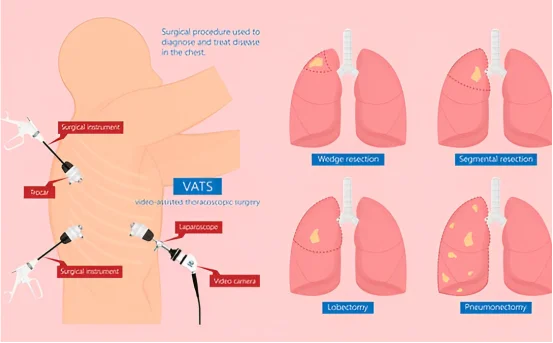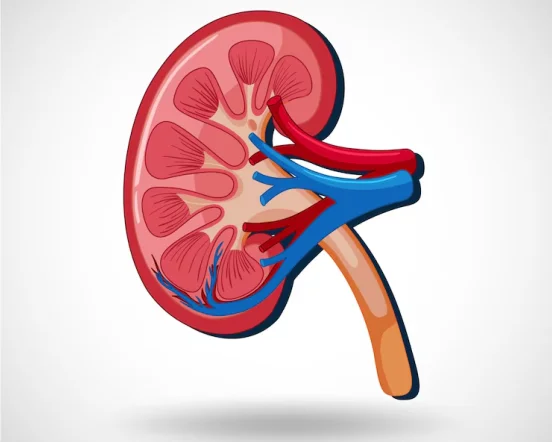Cancer remains one of the leading causes of death worldwide, but advancements in medical science have significantly improved survival rates and treatment outcomes. One of the most crucial aspects of cancer treatment is medical oncology surgery a specialized field focused on the surgical removal of tumors and cancerous tissues. Understanding the types of medical oncology surgery is essential for patients and caregivers to make informed decisions about treatment.
This specialized branch of surgery focuses on the surgical removal of tumors, cancerous tissues, and sometimes nearby organs or lymph nodes to prevent the spread of disease. In many cases, surgery offers the best chance for a cure, especially when cancer is detected in its early stages. For others, it can reduce tumor burden, ease symptoms, and enhance the effectiveness of treatments like chemotherapy or radiation.
What Is Medical Oncology Surgery?
Medical oncology surgery, often referred to as surgical oncology, is a branch of oncology that uses surgical methods to diagnose, stage, and treat cancer. It plays a critical role in:
- Removing cancerous tumors
- Reducing tumor size
- Preventing the spread of cancer
- Alleviating symptoms in advanced stages
Surgical oncology is often used in combination with chemotherapy, radiation therapy, and immunotherapy for a comprehensive treatment approach.
Major Types of Medical Oncology Surgery
Medical oncology surgeries are categorized based on their purpose and timing during the treatment process. Here are the main types:
- Curative Surgery
Purpose :- To completely remove the cancer from the body.
When it’s used :- When the tumor is localized and has not spread to other parts of the body.
Examples :-
-
Lumpectomy or Mastectomy for breast cancer
-
Colectomy for colon cancer
-
Prostatectomy for prostate cancer
Benefits :-
-
Offers the best chance of complete cancer removal
-
Can lead to remission if followed by other therapies
- Debulking Surgery
Purpose :- To remove as much of the tumor as possible when complete removal is not feasible.
When it’s used :- In cancers that are too large or have spread too much, like ovarian cancer.
Examples :-
-
Ovarian cancer cytoreduction
-
Gastrointestinal tumor debulking
Benefits :-
-
Enhances the effectiveness of chemotherapy or radiation
-
Reduces symptoms caused by large tumors
- Palliative Surgery
Purpose :- To relieve symptoms and improve quality of life, not to cure the cancer.
When it’s used :- In advanced or terminal cancer cases.
Examples :-
-
Surgery to relieve intestinal obstruction
-
Removal of tumors causing pain or pressure
Benefits :-
-
Eases pain, bleeding, or blockages
-
Helps improve day-to-day comfort for patients in palliative care
- Diagnostic Surgery (Biopsy)
Purpose :- To obtain tissue samples for lab testing and accurate diagnosis.
When it’s used :- As a first step after imaging tests indicate a possible tumor.
Examples :-
-
Needle biopsy
-
Excisional biopsy
-
Incisional biopsy
Benefits :-
-
Helps determine cancer type, grade, and stage
-
Crucial for planning an effective treatment strategy
- Staging Surgery
Purpose :- To find out how much cancer is present and whether it has spread.
When it’s used :- After cancer diagnosis but before treatment begins.
Examples :-
-
Laparoscopy for ovarian cancer staging
-
Lymph node dissection
Benefits :-
-
Assists in accurate cancer staging
-
Guides selection of appropriate therapies
- Preventive (Prophylactic) Surgery
Purpose :- To remove tissue or organs before cancer develops, especially in high-risk individuals.
When it’s used :- In people with inherited genetic mutations or strong family history of cancer.
Examples :-
-
Mastectomy in women with BRCA1 or BRCA2 gene mutation
-
Colon removal in familial adenomatous polyposis (FAP)
Benefits :-
-
Drastically reduces the risk of cancer development
-
Provides peace of mind for high-risk patients
- Reconstructive Surgery
Purpose :- To restore function or appearance after curative or debulking surgery.
When it’s used :- After removal of body parts affected by cancer (like breast or facial structures).
Examples :-
-
Breast reconstruction after mastectomy
-
Facial reconstruction post head and neck cancer surgery
Benefits :-
-
Improves cosmetic outcomes and psychological well-being
-
Helps patients regain physical functionality
Common Cancers Treated with Surgical Oncology
While surgery is not suitable for every type of cancer, it’s a key component in treating several types, including:
-
Breast Cancer
-
Colon and Rectal Cancer
-
Lung Cancer
-
Prostate Cancer
-
Esophageal and Stomach Cancer
-
Liver and Pancreatic Cancer
-
Head and Neck Cancers
-
Gynecological Cancers like ovarian or cervical cancer
Each of these cancers may involve one or more types of surgeries listed above based on the stage and individual patient factors.
Risks and Recovery
Like any major medical procedure, oncology surgeries come with risks, including:
-
Infection
-
Bleeding
-
Pain and discomfort
-
Blood clots
-
Delayed wound healing
-
Reaction to anesthesia
However, these risks are minimized through pre-operative planning, post-operative care, and advanced surgical techniques like minimally invasive or robotic-assisted surgery.
Recovery time varies depending on:
-
The type and complexity of surgery
-
Patient’s overall health
-
Whether other treatments (like chemotherapy) follow the surgery
Most patients require follow-ups to monitor healing and detect any recurrence.
Advancements in Oncology Surgery
Thanks to medical innovation, many surgeries today are performed using laparoscopic or robot-assisted techniques, leading to:
-
Smaller incisions
-
Less pain
-
Quicker recovery
-
Reduced hospital stay
Some advanced techniques include:
-
Sentinel lymph node biopsy (for early breast cancer and melanoma)
-
HIPEC (Hyperthermic Intraperitoneal Chemotherapy) for abdominal cancers
-
Video-assisted thoracoscopic surgery (VATS) for lung tumors
When Is Surgery Not Recommended?
Surgery may not be an option when:
-
The cancer has metastasized extensively
-
The patient is not fit for surgery due to other health conditions
-
The tumor is located in an inaccessible or high-risk area
In such cases, non-surgical oncology treatments like chemotherapy, radiation, or immunotherapy are preferred.
Conclusion
Medical oncology surgery is a cornerstone in the fight against cancer. From diagnosis to curative procedures, each type of surgical intervention plays a crucial role in improving outcomes and extending lives. Knowing the types of oncology surgeries available empowers patients to take an active role in their cancer treatment journey.























